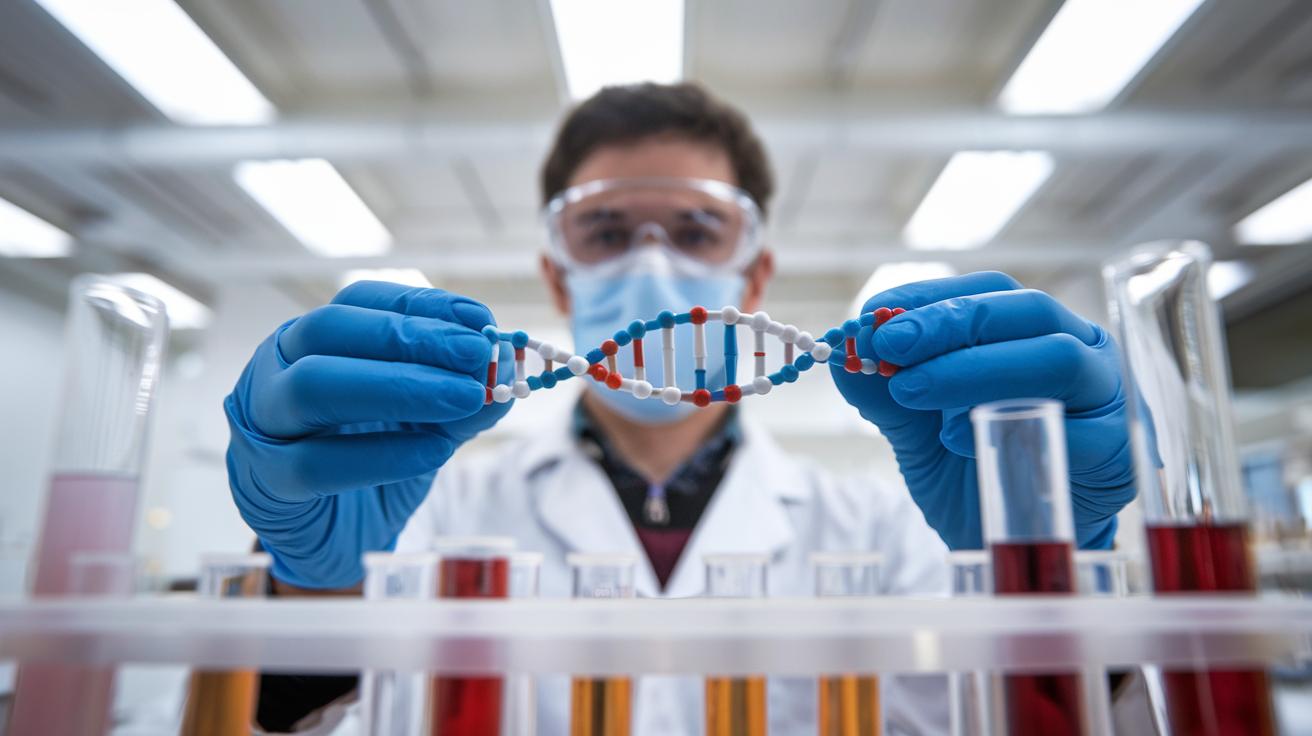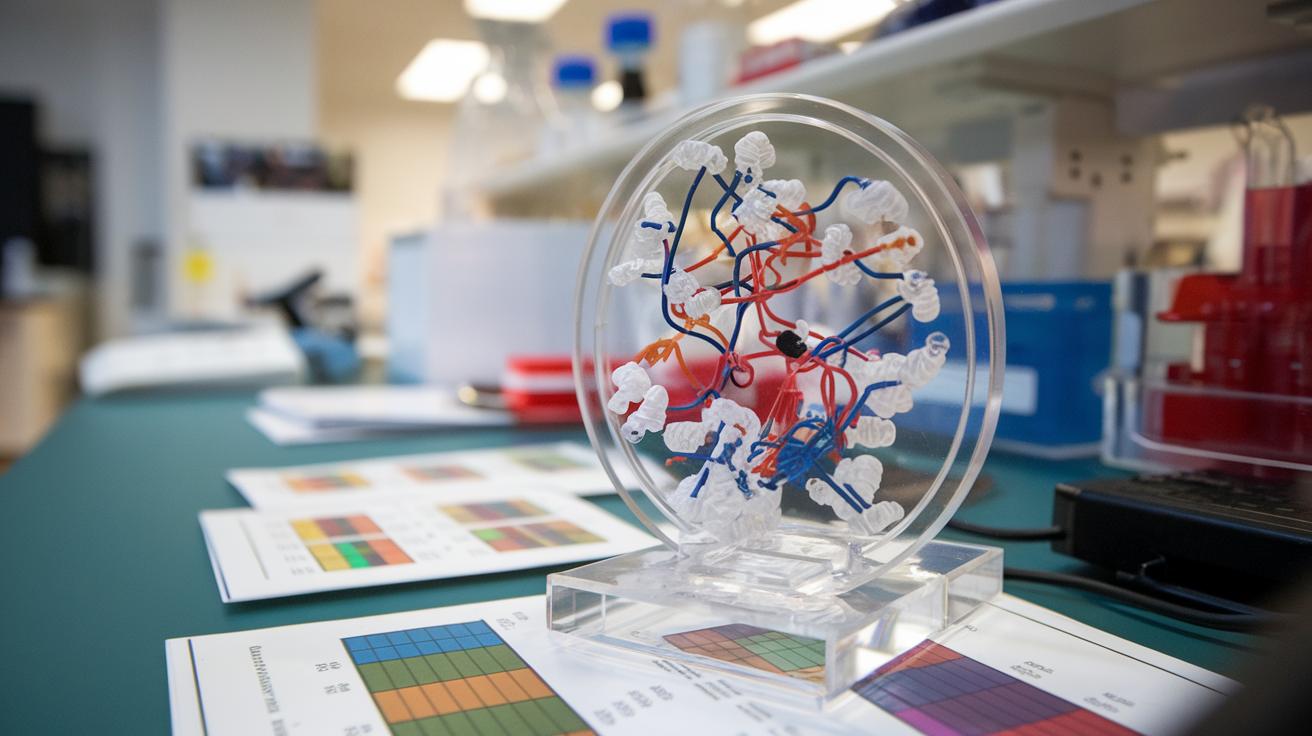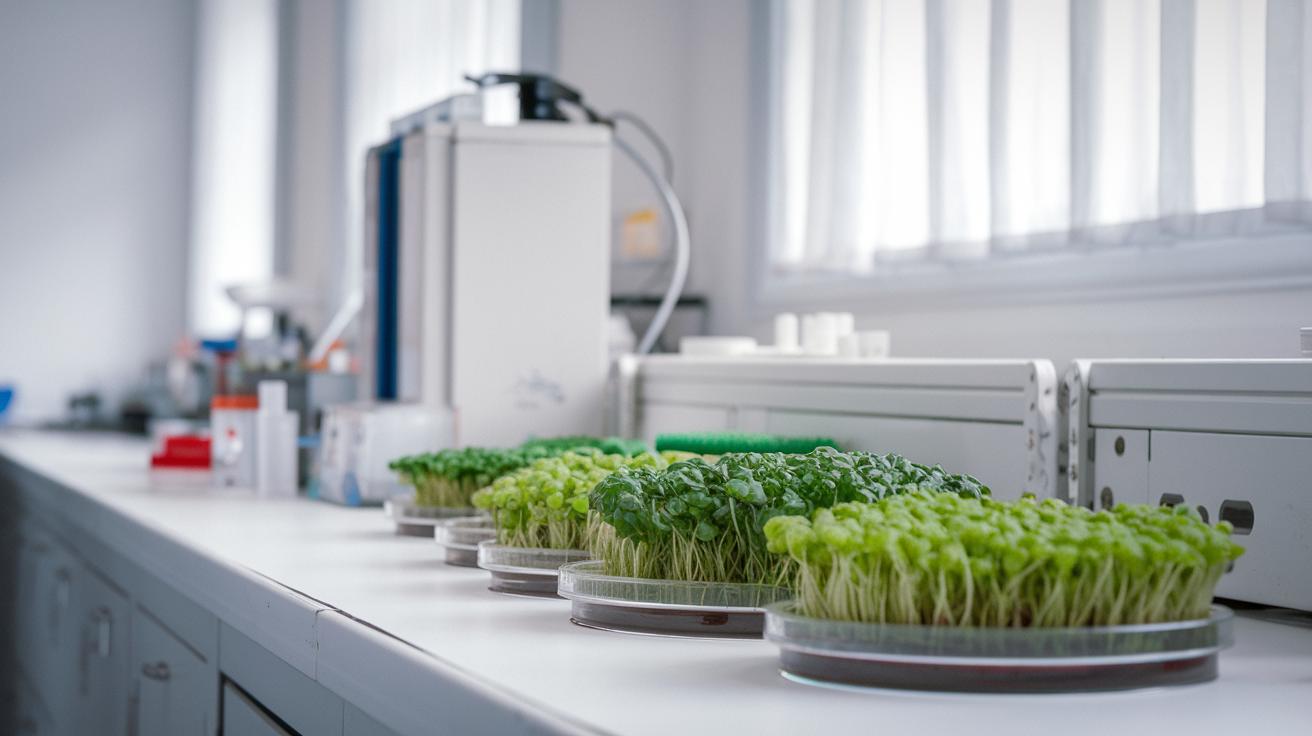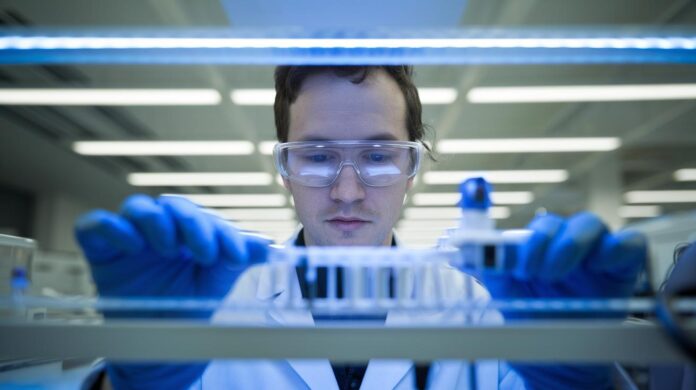Could humanity hold the blueprint to edit life itself? CRISPR technology, a groundbreaking molecular biology tool, offers the ability to modify genes with unprecedented precision. Originating from a bacterial defense mechanism, CRISPR, or Clustered Regularly Interspaced Short Palindromic Repeats, empowers scientists to alter DNA like editing text. With the advent of the CRISPR-Cas9 system in 2012, gene editing has transformed, promising advancements in medicine and agriculture. This article investigates the foundational aspects of CRISPR, revealing its potential to reshape biological research and its monumental role in revolutionizing genetic engineering.
Understanding What CRISPR Tech Is

CRISPR, an acronym for Clustered Regularly Interspaced Short Palindromic Repeats, originates from a natural defense mechanism found in bacteria. These repetitive DNA sequences enable bacteria to defend against viral attacks by guiding proteins to cut the DNA of invading viruses. This discovery laid the groundwork for CRISPR technology, which has since revolutionized genetic engineering.
The CRISPR-Cas9 system, introduced in 2012, utilizes this bacterial defense strategy to edit DNA with unprecedented precision. By employing RNA sequences to guide the Cas9 enzyme to specific DNA sites, CRISPR-Cas9 facilitates precise cuts in the DNA. This process allows scientists to remove, add, or alter DNA segments, significantly advancing gene editing capabilities.
Key features of CRISPR as a molecular biology tool include:
- Precision: Enables highly targeted DNA modifications.
- Versatility: Applicable across various organisms and cell types.
- Efficiency: Reduces time and costs in genetic research.
- Scalability: Facilitates large-scale genetic screening and studies.
- Accessibility: Widely adopted due to reduced costs and technical simplicity.
How CRISPR Tech Works

The CRISPR-Cas9 system represents a groundbreaking advancement in gene editing by utilizing RNA molecules to guide the Cas9 enzyme to specific DNA sequences. This RNA, known as guide RNA (gRNA), is crucial for targeting the precise location on the DNA where editing is intended. By binding to the Cas9 protein, the gRNA ensures that the enzyme accurately locates and interacts with the desired DNA site, facilitating highly targeted genetic modifications.
Steps in CRISPR-Cas9 Gene Editing
The gene editing process using CRISPR-Cas9 involves several critical steps that ensure precise DNA modifications:
- Role of Guide RNA: The guide RNA is designed to match the sequence of the target DNA. It binds to the Cas9 enzyme, serving as a navigation tool to direct the enzyme to the exact location on the DNA strand where a cut is needed.
- Cas9 Enzyme Function: Once guided by the RNA, the Cas9 enzyme acts as molecular scissors. It binds to the DNA at the specified site and introduces a double-strand break, which is essential for subsequent DNA modification.
- DNA Cutting and Repair Mechanisms: After the DNA is cut, the cell's natural repair processes are employed. This can involve non-homologous end joining (NHEJ) to create insertions or deletions, or homology-directed repair (HDR) to introduce precise genetic changes using a supplied DNA template.
| Step | Function |
|——|———-|
| Role of Guide RNA | Directs Cas9 to the target DNA sequence |
| Cas9 Enzyme Function | Cuts the DNA at the designated site |
| DNA Cutting and Repair Mechanisms | Facilitates the editing through natural cellular repair processes |
Through these steps, CRISPR-Cas9 technology enables precise alterations to the genetic makeup of organisms. This capability has revolutionized the field of genetic engineering, providing unprecedented opportunities for research, therapy, and innovation across various domains.
Applications of CRISPR Tech

CRISPR technology has emerged as a transformative tool in agriculture, enabling genetic modifications that enhance crop resilience and productivity. By editing specific genes, scientists can introduce traits that improve resistance to pests, diseases, and environmental stresses, thereby increasing agricultural efficiency and sustainability. This ability to alter plant DNA with precision accelerates the development of crops that can better withstand climate change, contributing to global food security.
In medicine, CRISPR is pioneering new avenues for treating genetic disorders, offering potential cures for diseases that were previously considered intractable. The technology is being utilized in clinical trials to correct mutations responsible for conditions such as cystic fibrosis and sickle cell anemia. Additionally, CRISPR is instrumental in developing CAR-T cell therapies for cancer, where T cells are engineered to target and destroy malignant cells. This application of gene editing holds promise for personalized medicine, allowing treatments to be tailored to individual genetic profiles, thereby enhancing therapeutic efficacy and reducing adverse effects.
CRISPR's impact is far-reaching across various fields:
- Agricultural Improvement: Enhances crop resistance to biotic and abiotic stresses.
- Disease Treatment: Offers potential cures for genetic disorders through precise DNA corrections.
- Cancer Therapy: Advances CAR-T technology, improving targeted cancer treatments.
- Biotechnology: Enables development of novel biofuels and industrial enzymes.
- Animal Breeding: Facilitates genetic improvements in livestock for better traits.
- Pathogen Research: Assists in studying infectious diseases by allowing targeted genetic alterations.
- Synthetic Biology: Supports the creation of genetically modified organisms for various applications.
Through these diverse applications, CRISPR technology continues to revolutionize genetic engineering, driving innovations that address critical challenges in agriculture, medicine, and beyond.
Benefits and Challenges of CRISPR Tech

CRISPR technology presents numerous benefits, particularly in the realms of genetic disease treatment and agricultural enhancement. By allowing precise modifications of DNA, CRISPR has the potential to cure genetic disorders such as cystic fibrosis and sickle cell anemia. This capability extends to agriculture, where CRISPR facilitates the development of crops with improved resistance to pests, diseases, and environmental stresses, thereby boosting yields and contributing to global food security. The technology's versatility and efficiency in genome editing have significantly reduced the time and cost associated with genetic research and development.
Despite these promising advancements, CRISPR technology is accompanied by significant ethical concerns and potential risks. One major issue is the possibility of unintended genetic changes, which could have unforeseen consequences on human health and biodiversity. The ease of editing germline cells, which pass genetic information to future generations, raises profound ethical questions about the implications of permanently altering the human genome. The prospect of "designer babies," where genetic editing could be used for non-therapeutic enhancements, sparks debates over the morality and social impact of such practices.
- Germline Editing: Raises concerns about permanent changes to the human genome.
- Unintended Genetic Changes: Potential for off-target effects that could impact health and ecosystems.
- Designer Babies: Ethical debates over genetic enhancements beyond therapeutic uses.
- Equitable Access: Concerns about the accessibility of CRISPR technology and its benefits.
- Regulatory Oversight: Need for comprehensive governance to manage CRISPR's ethical and safety implications.
These ethical issues necessitate ongoing dialogue and robust regulatory frameworks to guide the responsible use of CRISPR technology in both medical and agricultural contexts.
Future Prospects of CRISPR Tech

Advancements in CRISPR technology are focused on enhancing precision and efficiency, addressing concerns related to off-target effects that can lead to unintended genetic alterations. Researchers are refining the CRISPR-Cas9 system to improve its accuracy, which is crucial for its safe application in clinical and agricultural settings. Innovations such as base editing and prime editing represent significant strides in the gene-editing field, allowing for more precise modifications without introducing double-strand breaks. These advancements are poised to expand the therapeutic potential of CRISPR, making it a cornerstone of future personalized medicine.
The societal impact of CRISPR technology is vast, with the potential to revolutionize healthcare and agriculture, thereby transforming global health and food security. As CRISPR becomes more integrated into medical practice, it could lead to the development of treatments tailored to individual genetic profiles, significantly improving outcomes for patients with genetic disorders. Moreover, CRISPR's application in agriculture can contribute to the development of crops better suited to withstand climate change, addressing food scarcity concerns. The ethical and regulatory frameworks surrounding CRISPR will play a pivotal role in ensuring that its benefits are equitably distributed across society.
- Enhanced Precision: Development of techniques like base editing to increase accuracy.
- Personalized Medicine: Potential to tailor treatments to individual genetic profiles.
- Global Health Impact: Contributions to food security and disease treatment advancements.
These future developments highlight CRISPR's transformative potential, emphasizing the need for ongoing research and ethical consideration as the technology continues to evolve.
Final Words
Delving into what is CRISPR tech reveals its transformative role in molecular biology. This powerful tool facilitates precise DNA editing with applications spanning from agriculture to medicine. CRISPR-Cas9, the heart of this technology, offers groundbreaking possibilities for genetic improvement and disease treatment.
While its benefits are vast, ethical debates and potential risks continue to shape our understanding and use of CRISPR. As advancements progress, the promise of CRISPR technology in personalized medicine appears limitless. The evolution of this technology is poised to reshape various sectors positively.
FAQ
What is CRISPR tech used for?
CRISPR technology is used for precise DNA editing, enabling modifications in organisms for research, agriculture, and medicine. It aids in enhancing crop resistance and developing treatments for genetic disorders and diseases.
What is CRISPR-Cas9?
CRISPR-Cas9 is a revolutionary gene-editing system that uses RNA guides to direct the Cas9 enzyme to specific DNA sequences, allowing for targeted modifications like cutting, adding, or altering DNA.
What does CRISPR stand for?
CRISPR stands for Clustered Regularly Interspaced Short Palindromic Repeats, which are sequences found in the genomes of bacteria that serve as a defense mechanism against viruses.
How does CRISPR work?
CRISPR operates by using RNA to guide the Cas9 enzyme to desired DNA locations, where it makes precise cuts. This enables the removal, addition, or alteration of DNA segments for various genetic engineering applications.
When was CRISPR invented?
CRISPR was first introduced as a gene-editing tool in 2012, harnessing the natural bacterial defense system to revolutionize genetic research and applications.
What does CRISPR tech do?
CRISPR technology facilitates targeted gene editing, enhancing disease treatment, agricultural innovation, and scientific research by allowing precise DNA modifications to improve traits or correct genetic anomalies.
What does CRISPR mean for beginners?
CRISPR is a gene-editing method that allows scientists to precisely alter DNA sequences in organisms. It simplifies genetic research, aids in disease prevention and treatment, and improves agricultural productivity.
Is CRISPR currently being used on humans?
CRISPR is used in clinical trials involving humans for therapeutic purposes, such as editing genes to treat inherited blindness and modifying immune cells in cancer therapy.
How expensive is CRISPR on humans?
The cost of CRISPR applications on humans varies significantly, influenced by the specific treatment, research, or technology development stage. Currently, expenses are high, but they are expected to decrease with technological advancements and widespread adoption.


